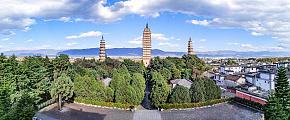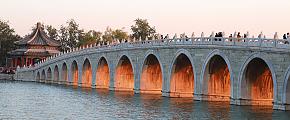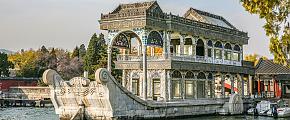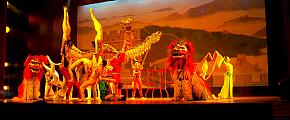Drinks and Snacks of China - Dumplings
Dumplings play an important role in Chinese food culture. People often make dumplings and share them with their families on festivals and important days. This article will share three important kinds of dumplings, which are Jiaozi, Wonton, and Yuanxiao.
Jiaozi
In China, many different dishes have been translated into English as "dumplings". Of these, Jiaozi is the most common. Popular in the north of China, it is a necessary part of any Festivity and served as the main dish for the Spring Festival, and Chinese New Year's.
In northern China, especially in the countryside, Jiaozi is not only eaten during Chinese New Year but can be served all year when there are guests for dinner. In provincial towns and market villages, many restaurants specialize in this dish.
 Jiaozi
Jiaozi
Jiaozi is made of a dough wrapper stuffed with seasoned meat and vegetables. They are shaped like ancient Chinese gold and silver pieces, and so are auspicious omens wishing the eater wealth and happiness. Cooking techniques include boiling, steaming, and frying.
A great range of ingredients may be used for Jiaozi's stuffing: minced pork mutton or beef, minced prawn or shrimp, vegetables, and dried mushrooms to name but a few. The ingredients are almost unlimited. The normal seasonings used in Jiaozi's filling are soy sauce, salt, sugar, minced scallion, ginger root, and peanut or sesame oils. Jiaozi are particularly delicious because, in the process of boiling or steaming, the steam generated inside the wrapper does not escape, keeping the flavor inside.
From a Tang Dynasty (618-907) tomb excavated in 1968 in Xinjiang, a wooden bowl was unearthed, containing a number of dumplings that look the same as today's Jiaozi. This testifies that dumplings had been eaten in the Northwest parts of China for at least a thousand years.
Huntun (Wonton)
Another type of Chinese dumpling is called Huntun (Wonton). It is made in a similar way as Jiaozi, but the wrapper is thinner and contains less filling.
Huntun is always boiled and served about a dozen at a time in a bowl of soup seasoned with sesame oil, soy sauce, and a pinch of shredded parsley.
Huntun is popular not only in the north but also in many southern parts of China. It was customary in old Beijing for people to eat Huntunat on the winter solstice.
The origins of Huntun are unknown, but it is known that they existed as far back as the Song Dynasty (960-1279). The name according to a Song Dynasty record suggests that Huntun got its name "because it was first made by the Hun and Tun clans of the north outside of the Great Wall".
Yuanxiao
Yuanxiao is a special dumpling in China eaten during the Lantern Festival (the 15th night of the 1st lunar month). It is a "ball" made of glutinous rice flour and stuffed with a sweet, or salty filling. Yuanxiao, it is said, made its debut in the Eastern Jin Dynasty (317-420 AD.) and became popular during the Tang (618-907) and Song (960-1279) Dynasties.
The book "Notes on a Year in Hubei" written in the Tang Dynasty, mentions "bean-paste-filled cakes which were made on the 15th day of the 1st lunar month" and "floating cakes in thin gruel prepared at the middle of the first moon". Since the 15th night of the New Year was called the Yuanxiao festival, the dumplings were named after this festival. Yuanxiao dumplings fall into two categories, those with and without filling.
The process of making Yuanxiao dumplings without filling is much simpler than those with. A suitable amount of water is mixed into glutinous rice flour to make a dough, which is then shaped by hand into small "solid balls". The balls or dumplings are boiled in sweetened water and when cooked are served in bowls. They can also be boiled in plain water and then sprinkled with sugar in a serving bowl. The third way of preparation is to cook them with dried longan pulp, candied dates, or jujubes to make a kind of porridge. Sweetened with sugar and osmanthus flowers, it makes an excellent dessert.
Filled dumplings, may either be sweet or salty in taste. For the sweet variety, the filling may be sugar, walnut meat, sesame, osmanthus flowers, rose petals, sweetened tangerine peel, and bean or jujube paste. The salty variety can be filled with minced meat, vegetables, or a mixture of both. In either case, the materials are minced and well mixed.
The way to make stuffed dumplings also varies between the north and the south of China. The method in southern China is to shape the dough of rice flour into a ball, make a hole in each ball insert the filling inside, close the hole, and smooth out the surface by rolling the ball between the hands. In the north, where sweet and non-meat stuffings are normally used, people roll the fillings into a ball, then dip them in water and roll them in dry glutinous rice flour. A layer of the flour will stick to the filling balls, which are dipped in water and rolled again in the rice flour. This will continue until the dumplings are the desired size.
What Our Clients Say
"Great Customized Service", "Trip of A Lifetime", "Exceed All Expectations"





